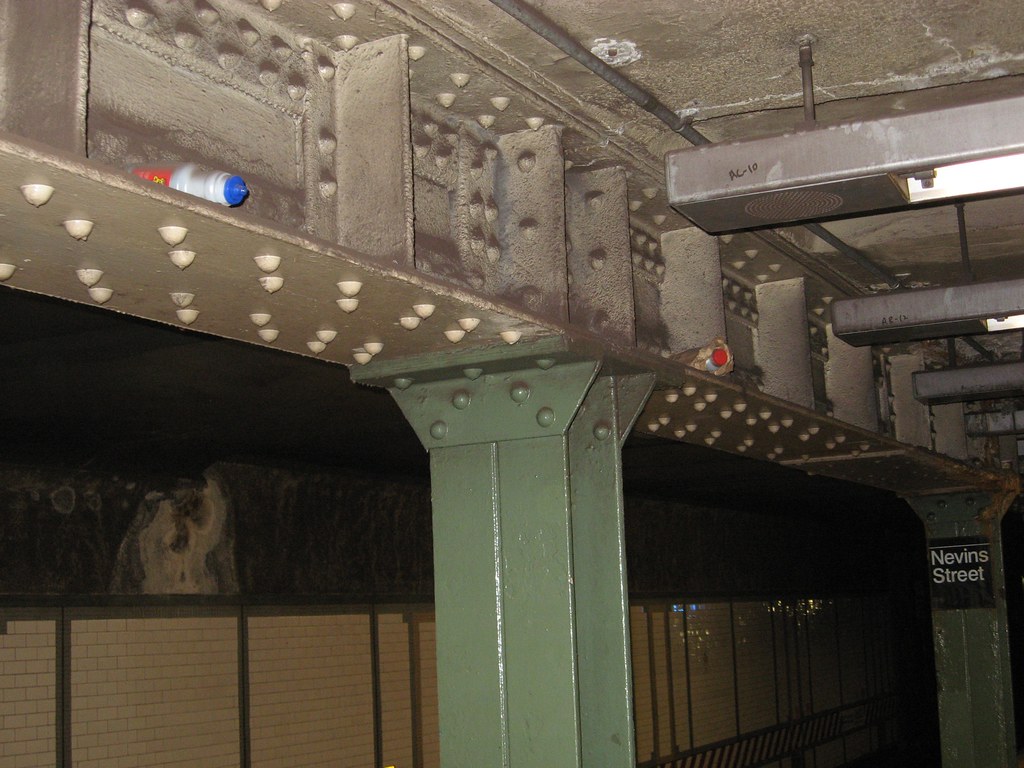
The flip seats on this R160, currently in service along the E line, will remain in the locked position. (Photo courtesy of New York City Transit)
To combat overcrowding, transit agencies can turn to a variety of solutions. Some may look to increase capacity by running more car sets, but eventually those efforts will max out when the tracks are overcrowded with trains. Others may look to a low-cost solution that allows them to stuff more people into a single car by removing seats. That’s the path New York City Transit first started to follow in April 2008 when the agency announced a pilot that see seats removed at rush hour. Now that this train car is rolling, though, the authority has canceled those plans.
The flip-seat pilot, when first unveiled, was not without its detractors. Crowded rush hour subways can already resemble cattle cars, and by removing all seats, the standing masses might take up less space but would be considerably less comfortable. Few riders liked the plan, and the plan seemed to stall last September when Kawasaki refused to retrofit an R142. Yet, Transit went ahead with the order on an R160 anyway, and the train hit the rails in February albeit with the seats locked in the down position.
As Pete Donohue reports in The Daily News, New York City Transit has no plans to flip the seats up any time soon, and it sounds as though the pilot may have been canceled for good. According to Donohue’s sources, Transit has scrapped the idea because of the fear of a widespread public backlash against the MTA. Since fare hikes and service cuts have left New Yorkers disgruntled, removing seats might push them over the edge.
“People are already feeling they’re paying more for less,” Donohue’s source, a transit official, said. “I don’t know that a train like that, even though the idea was to increase capacity, was something that the public would have embraced. We’re not going down that road.”
The original plan called for four cars in a eight-car train to be without seats for a year’s worth of rush hours. Transit would have surveyed rider reaction and then determined whether or not to expand this program as it orders new cars in the future. One MTA board member is pleased to hear that the seatless cars won’t see the light of day. “I think there would have been civil disobedience,” Andrew Albert, the New York City Transit riders representative to the board, said. “I think people would have brought bolt cutters and unlocked the seats. I hated that idea. I still do. We shouldn’t be locking [seats] away from riders. We shouldn’t be telling people they can’t have seats.”
Albert’s reaction may be a strong one, but the psychological impact of a seatless car train isn’t in doubt. Even if we’re not sitting down, we still want to know that the chance to sit might exist. Still, the fact remains that certain subway lines at rush hour are too crowded. The East Side IRT cannot handle more passengers or train sets, and the Queens Boulevard lines are nearing capacity as well. A one-train experiment with four cars of seats locked up during the rush might have been worth it.
In the end, this pilot was doomed by a change in administration at Transit. Ordered by Howard Roberts, it was canceled when economic circumstances changed with Tom Prendergast as Transit president. Still, transit officials assure me that all is not lost with this new R160. “This particular 8-car set also contains other handhold options as well as video surveillance equipment,” Transit spokesman Paul Fleuranges said to me an e-mail. “The testing of that equipment is on going. So it would be incorrect to infer that any money spent on these cars is now ‘down the drain.'”











